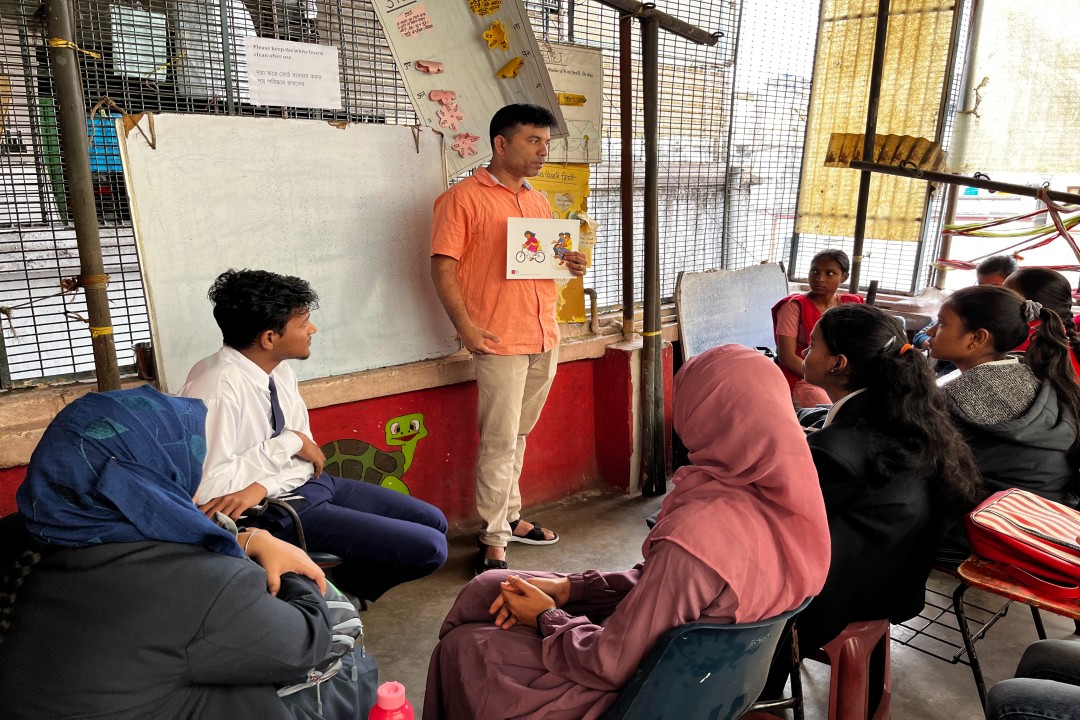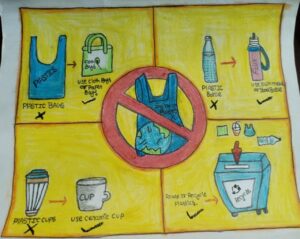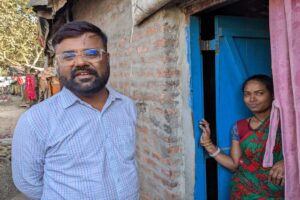
By Sean Duggan

The amount of sex education I had growing up in Britain in the 1970s was nil, zip, zilch, nada, absolutely none, either at school or at home. The closest I got to it was at about the age of 16, when my father said one day that if there was anything I ever wanted to talk about then I should come to him.
There would have been a lot less angst and misunderstanding in my adolescent years had I been lucky enough to attend a few of the sex education sessions run by Souvik for CR students.
Accompanying a visitor to our No 10 education centre for the first time, we end up chatting in a small classroom with Ananya who heads our education project, Tuli the career counsellor and Souvik who is a male social worker who supports the students (alongside Suchandra who is a trained psychologist).
The subject comes round to sex education and Souvik pulls out two 3D teaching aids from a drawer which graphically illustrate the male and female sexual reproductive systems. Ananya explains that there is no segregation in the school on principle and so they teach the subject to mixed groups of boys and girls. Souvik says that this helps prevent the boys from making inappropriate remarks about girls.
They couch the subject in terms of talking about how the body changes during adolescence and the discussions develop around questions from the students. Nothing is out of bounds. Souvik says he explains that masturbation is a natural bodily function, like eating, but there are places and times when it is inappropriate.
Like children around the world today, the students are exposed to online porn from an early age and Sovik talks about this and the danger of becoming addicted to it in his sessions. CR students live in unsafe environments where sexual abuse is common, so one of the first lessons, using dolls, is explaining what parts of the body are ok for other people to touch, and which are not.

Ananya cites several cases where this knowledge has led students being abused to tell teachers, and allowed CR to then intervene to stop it. Menstruation is discussed and Souvik said it is important for boys to understand what their sisters are going through so they can be empathetic, not critical.
Ananya reaches into a large sack and pulls out a sanitary pad that the female students are free to collect when they need them. Souvik then holds up laminated banners, first showing what a girl and boy look like on the outside and then on the inside.

He says that with the older age groups they discuss relationships and relationship break-ups and how to cope with them. Souvik says young people will engage in sex and they have a right to do so. He explains contraception to the senior students, giving them the knowledge to manage that effectively when the time comes. Diseases like HIV are also discussed with senior students.
I ask whether parents, who come from such a traditional background, ever object, and he says no. From the start they inform parents what they will be doing and often the students share valuable knowledge when they get home with their families, breaking taboos and overturning myths. Special sessions are arranged for mothers on good parenting and tackling adolescent issues.
You might think that what CR is doing here is representative of a very progressive approach to the subject in Indian schools, but Ananya assures me it isn’t.
In fact there is not a single state school in Kolkata providing any sex education, though they are supposed to. She says that several CR girls got punished for talking about it in the formal school they attend. But when inspectors later visited the school the teachers put the girls at the front of the class as only they were able to discuss the subject with any knowledge. Ananya, Souvik and Suchandra have worked very hard to develop this subject and adapt teaching aids from elsewhere to make them appropriate.
I have to admit that sitting in a small room with three women and Souvik talking about sex in such an open and matter-of-fact way feels both liberating and a little uncomfortable, as if I am having my first sex education lesson at the age of 63 – which I suppose I am.
But oh boy, do I respect them for having the clarity of vision and the guts to do this work here in Kolkata.
I am not sure that anything else on the curriculum is actually going to be as directly beneficial to CR’s students as this.
They may be growing up in the most challenging circumstances, but this knowledge will help them avoid so much pain and so many pitfalls that other young people in this city will have to try and blunder their way through blind.



